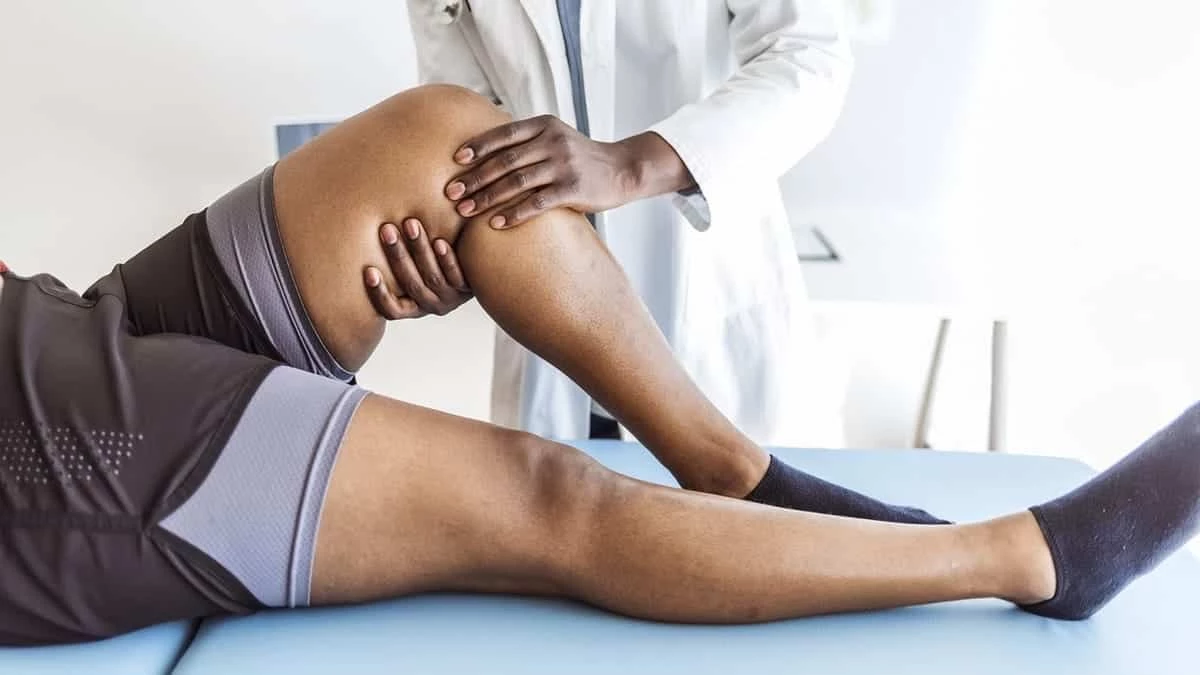Physiotherapy for Knee Pain: Causes, Treatment & Exercises
Explore how physiotherapy relieves knee pain
Knee pain affects people across all age groups, from athletes and runners to office workers and older adults. It can be caused by injuries, poor posture, arthritis, or overuse and often leads to difficulty walking, climbing stairs, or even standing for long periods.
The good news? Physiotherapy is one of the most effective non-invasive treatments to manage and recover from knee pain. It strengthens muscles, restores mobility, and helps you avoid medication or surgery.
In this blog, we’ll cover:
- Common causes of knee pain
- How physiotherapy helps
- Effective, physiotherapist-approved exercises
- When to seek professional help
Let’s break it down.
Knee osteoarthritis (KOA) is a leading global cause of disability, primarily marked by knee pain, stiffness, and lower-limb muscle weakness, which impair mobility and quality of life. Effective rehabilitation focuses on improving knee range of motion (ROM), quadriceps strength, and overall function while minimizing pain.
Epidemiology and Pathophysiology
KOA affects around 22.9% of adults over 40 and 16% of adults over 15, accounting for ~654 million global cases in 2020. By 2050, knee OA cases are expected to rise by ~75%. Women are disproportionately affected, with prevalence rates ranging from 27.1% to 66.1%.
Pathophysiologically, KOA involves cartilage degradation, osteophyte formation, synovial inflammation, and subchondral bone changes. Matrix metalloproteinases (MMPs) and ADAMTS enzymes mediate extracellular matrix breakdown, while macrophage-derived cytokines (TNF, IL-1) contribute to joint inflammation and bone remodeling.
Clinical Features and Diagnosis
Typical signs include pain aggravated by movement, morning stiffness, reduced ROM, muscle weakness, and joint instability. The Kellgren-Lawrence grading system (0–4) remains the standard radiographic classification for KOA severity, assessing joint space narrowing and osteophyte formation.
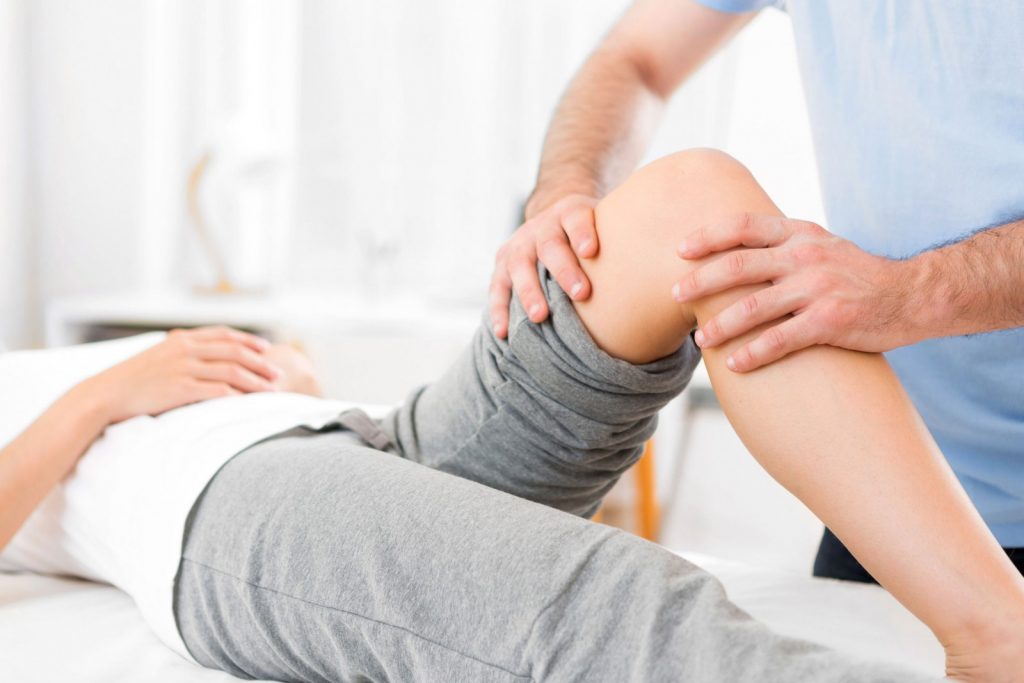
Common Causes of Knee Pain
Knee pain may be acute (sudden) or chronic (persistent). Here are the most frequent causes treated with physiotherapy:
1. Osteoarthritis
Age-related cartilage wear leads to stiffness and inflammation.
2. Patellofemoral Pain Syndrome (Runner’s Knee)
Pain around the kneecap is common in runners or those doing high-impact activity.
3. Ligament Injuries (ACL, MCL)
Often due to trauma or sudden movement, especially in sports.
4. Meniscus Tear
Injury to the cartilage from twisting or aging.
5. Tendinitis
Inflammation from repetitive strain or overuse.
6. Bursitis
Inflammation of fluid-filled sacs cushioning the joint.
7. Post-Surgical or Post-Fracture Stiffness
Common after knee surgeries or immobilization due to a fracture.
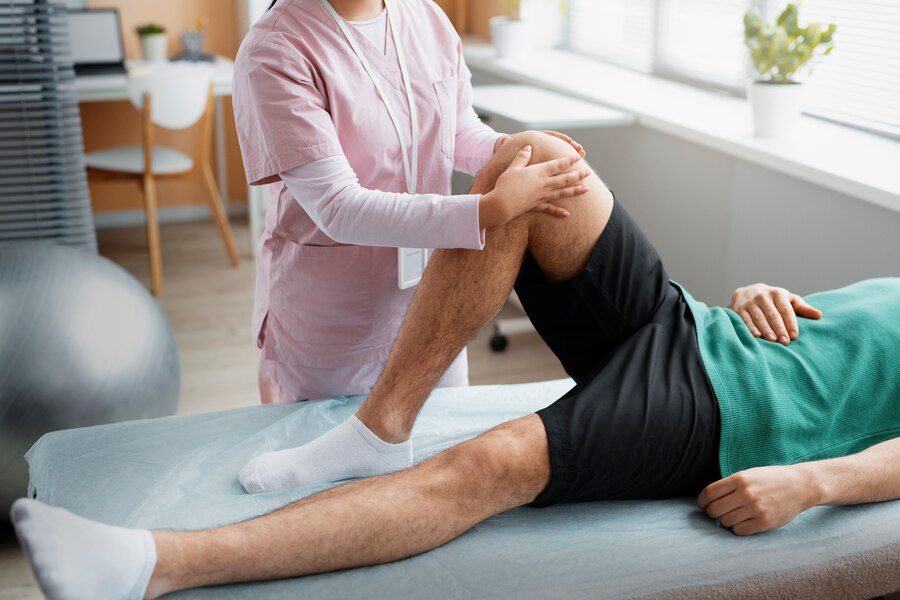
How Physiotherapy Helps Relieve Knee Pain
Physiotherapy focuses on treating the root cause, not just suppressing symptoms. Here’s how it works:
Pain Management
- TENS, ultrasound, heat/ice therapy
- Manual therapy to release tight structures
Strengthening Muscles
- Exercises for quads, hamstrings, glutes, and calves
- Helps support the knee and prevent overloading
Restoring Mobility
- Joint mobilization and soft tissue techniques
- Improves flexibility and range of motion
Gait & Posture Correction
- Fixes movement patterns that stress the knee
- Supports long-term recovery
Injury Prevention
- Functional rehab plans
- Personalized exercise and education for long-term joint health
- Physiotherapy Management
- Rehabilitation aims to restore function, alleviate pain, and enhance muscle performance.
- Conventional therapies: Isometric quadriceps strengthening, stretching, and interferential therapy have proven effective for pain relief and mobility.
- Advanced physiotherapy techniques: Recent evidence supports integrating newer modalities with traditional programs for optimal outcomes:
- Kinesiotaping – pain modulation and proprioceptive support
- Mulligan mobilization – improved knee mechanics and ROM
- Muscle energy techniques – end-range knee extension gains
- Aquatic therapy – reduced joint loading, improved balance and strength
- Pilates and eccentric exercises – enhanced stability and functional control
- Blood flow restriction training – increased muscle strength at lower loads
- Sensor-based gait training – virtual feedback to correct movement patterns
- Review Findings
- A systematic literature review (2019–2023) screened 180 systematic reviews across PubMed, Cochrane Library, EMBASE, and Google Scholar; 15 studies met inclusion criteria based on ACR-defined KOA parameters. Key outcome measures included VAS, WOMAC, Lequesne Index, ROM, and 50-meter walk test.
Physiotherapy Management
Rehabilitation aims to restore function, alleviate pain, and enhance muscle performance.
- Conventional therapies: Isometric quadriceps strengthening, stretching, and interferential therapy have proven effective for pain relief and mobility.
- Advanced physiotherapy techniques: Recent evidence supports integrating newer modalities with traditional programs for optimal outcomes:
- Kinesiotaping – pain modulation and proprioceptive support
- Mulligan mobilization – improved knee mechanics and ROM
- Muscle energy techniques – end-range knee extension gains
- Aquatic therapy – reduced joint loading, improved balance and strength
- Pilates and eccentric exercises – enhanced stability and functional control
- Blood flow restriction training – increased muscle strength at lower loads
- Sensor-based gait training – virtual feedback to correct movement patterns
Review Findings
A systematic literature review (2019–2023) screened 180 systematic reviews across PubMed, Cochrane Library, EMBASE, and Google Scholar; 15 studies met inclusion criteria based on ACR-defined KOA parameters. Key outcome measures included VAS, WOMAC, Lequesne Index, ROM, and 50-meter walk test.

Best Physiotherapy Exercises for Knee Pain
Always perform under the guidance of a certified physiotherapist.
1. Quad Sets
Tighten thigh muscles while the leg is straight.
Great early rehab tool.
2. Straight Leg Raises
Lift one leg while lying down.
Builds quad strength with minimal knee stress.
3. Hamstring Curls
Bend the knee while standing.
Strengthens the rear thigh for knee support.
4. Wall Slides
Slide into a partial squat while leaning on a wall.
Improves strength and stability.
5. Heel and Calf Stretch
Lean toward a wall while keeping the heels down.
Relieves tight calves and enhances knee mobility.
6. Step-Ups
Step onto a low platform and back down.
Builds everyday strength and balance.
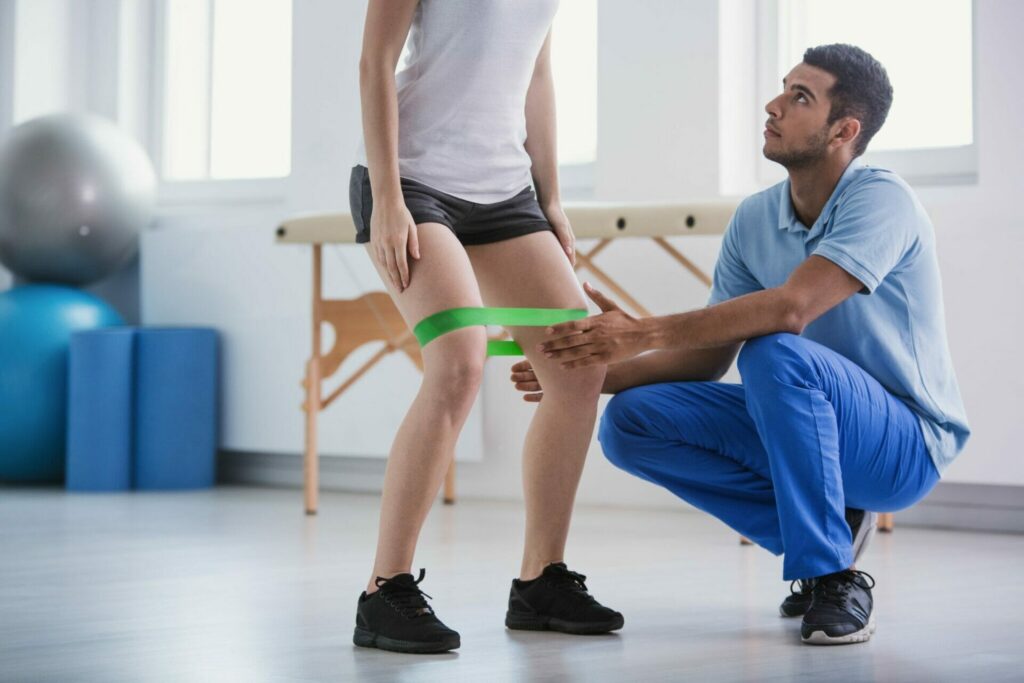
When to See a Physiotherapist
Seek professional help if:
- Pain lasts more than 7–10 days
- You experience swelling, locking, or clicking
- Climbing stairs or walking becomes difficult
- Medications stop working
- You’re recovering from knee surgery or injury
Early physiotherapy = faster and fuller recovery.
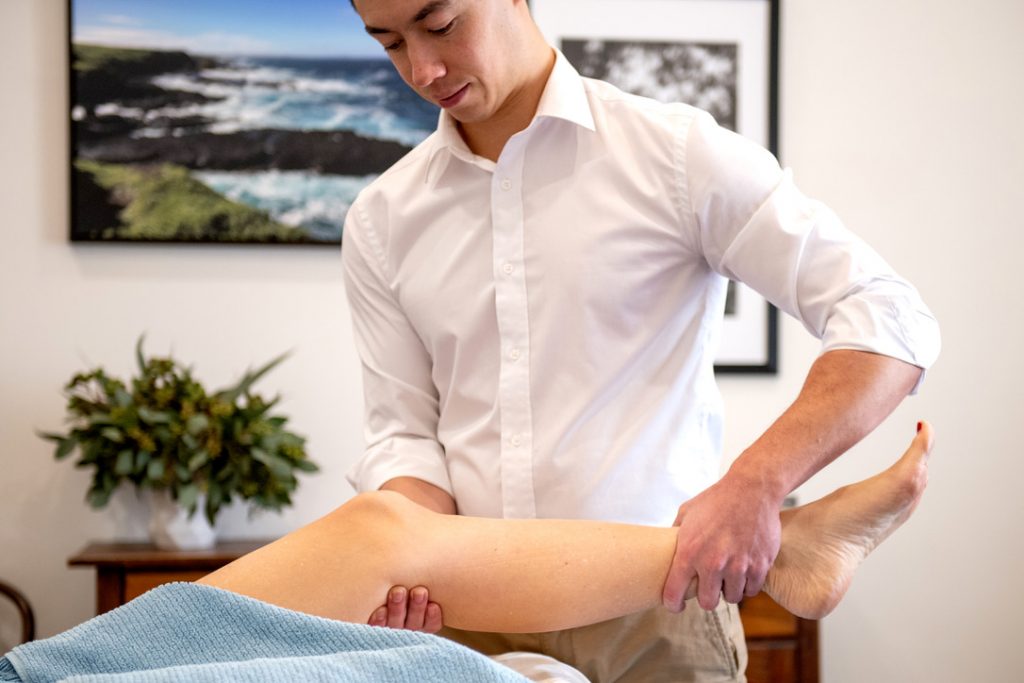
FAQs: Knee Pain & Physiotherapy
Q1. Can physiotherapy permanently relieve knee pain?
Yes, especially for mechanical issues like weakness, poor posture, or mild arthritis. Long-term relief is possible with consistent therapy.
Q2. Can I exercise if I have knee pain?
Yes, but only under expert guidance. A physiotherapist will tailor exercises to your condition.
Q3. Can knee osteoarthritis be managed without surgery?
Absolutely. Many OA patients avoid surgery through strengthening and manual therapy.
Q4. How many physiotherapy sessions do I need?
It depends on your condition—mild issues may need 5–7 sessions; complex or post-surgical rehab can take longer.
Why Choose FitoFine for Knee Physiotherapy?
At FitoFine, we use a hands-on, individualized approach to treat every patient. Whether you’re recovering from an injury, surgery, or chronic pain, our methods ensure faster healing and lasting results.
We offer:
- Certified, experienced physiotherapists
- 1-on-1 care and customized plans
- Modern techniques: dry needling, cupping, manual therapy
- Home exercise programs
- Drug-free, surgery-free recovery
Let FitoFine Help You Get Back on Your Feet
Don’t let knee pain control your life. With FitoFine, you’ll get expert care, faster recovery, and a plan tailored to your goals, whether that’s pain-free walking, sports return, or improved quality of life.
Email: fitofine.in@gmail.com
Website: www.fitofine.com
Phone/WhatsApp: +91 6295115701
Working Hours:
Mon to Sat: 5:00 PM to 10:00 PM
Sunday: Closed

